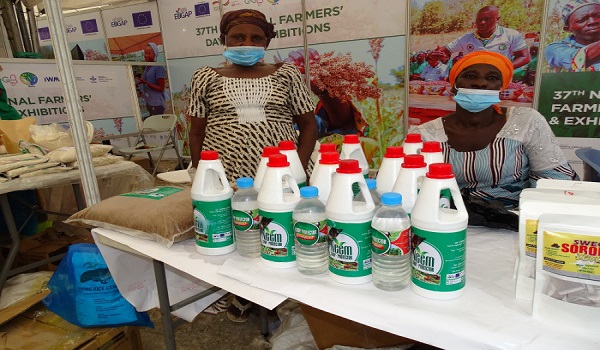In Ghana, CABI works with entomologists to teach vegetable growers how to make neem seed-based biopesticides locally.
44 vegetable farmers have received training from PlantwisePlus in the local formulation of neem-based biopesticides for pest control in vegetable production. This training was done in partnership with Professor Ken Owae Fening, an entomologist from the University of Ghana.
38 male and 6 female farmers who produce vegetables in the Volta Region’s Anloga district participated in the training in March. The development of capacity and systems for, as well as the promotion of greater production and use of, safer, locally accessible, and reasonably priced low-risk plant protection products are key goals of the CABI PlantwisePlus initiative. Hence, replacing the use of extremely dangerous pesticides for agricultural production pest control.
The initiative hopes to increase awareness of and use of agricultural technology that is low-tech, ecologically benign, and climate-adaptive. These may offer low-risk approaches to managing destructive agricultural pests.

Neem seed: why use it?
Neem seed extracts are being used to combat pests as a result of studies and trials conducted by the University of Ghana that have shown their efficiency in preventing the Diamond Back Moth (DBM) from attacking cabbage. According to the study, neem seeds have a considerably higher concentration of the active component (Azadirachtin) than neem leaves. To provide access to safer and more economical homemade biopesticides, farmers can be taught how to manufacture and use neem seed extracts. This will decrease the overuse of riskier chemical pest control methods.
Neem has various mechanisms of action than traditional insecticides. For instance, acting as a growth retardant, repellent, or antifeedant, among other things. As a result, the extract works well to manage a variety of insect infestations in the field.

Getting the neem seed extract ready
The emphasis of the training was to provide the farmers with the precise abilities needed to carry out each phase of the preparatory process. This involved gathering ripe fruits and de-pulping them in order to retrieve the seeds. also, and suitable techniques for drying and storing them.
The farmers also learned how to manually grind dried neem seeds into a thin paste, which is then used to extract the extract. To create the solution used in spraying fields, the extract is combined with water and filtered.
Increasing the use of less-dangerous plant protection measures
It is anticipated that the training would pique farmers’ interest in utilizing tried-and-true low-tech, local, low-cost, and safer pest management solutions. As a result, the risks to human health, the environment, and the safety of food linked with the excessive use of chemical pesticides will be reduced.
The farmers in their network are likely to actively impart the knowledge they learned during the training to other farmers. helping to spread the technology’s reach to more farms.
Following up after the training revealed that some of the taught farmers had already begun picking developed neem fruits, which are in season right now. To get the seeds from the fruit for storage, they have removed the pulp. Later, these seeds will be treated and used in the upcoming growing season.
To enable more training in other districts and areas, the PlantwisePlus project intends to provide a training handbook on the collection, processing, and application of neem seed extract in the future.


